Bike-Sharing in Vassar & Poughkeepsie

A pink bike parked in front of Sunset Lake at Vassar taken by alumnae Evan Abramson, class of ‘00
“Oh really? I didn’t know that!” is the most common response I get when I ask about Vassar’s now defunct bike sharing service. About a decade after the 30 pink bikes were donated to start Vassar‘s Shared Bike Program by the class of 2009 and alumnus Paul Lehman ’86, only scattered stories and one or two pink bikes remain. Perhaps just a little ahead of its time, the program quickly disintegrated due to thefts, vandalism, and misuse, mostly by Vassar students themselves. Isa Pengskul, a current junior, recounts stories of students “not respecting the bikes” including one instance where “some ended up in being thrown into Sunset Lake probably as a result of some drunk dare”.
I myself only found out about the program sometime after starting this project investigating bike sharing in Vassar and Poughkeepsie (Picture of the original pink bike fleet below). I had the privilege to do a one semester exchange at Vassar this fall, and coming from Singapore, where bike sharing had just been implemented and had made a strong impression on me in the month before flying to the US, I sought to investigate the possibility of starting something similar either on campus or in the city. As such, I jumped on the opportunity to do so as part of a Community Engaged Learning placement with the Vassar Environmental Cooperative and Office of Sustainability.
( )
)
Aim
As I was only at Vassar for the semester, I wanted to embark on a project that could be completed in the short term. I decided to do some background research on the cost-benefit, feasibility, and public opinion on bike sharing, and more generally, on bike-use, at Vassar and in Poughkeepsie. The goal of this background research is then to create a review and analysis that transport and sustainability organizations or future students might draw and build on in future.
Methodology
In my previous semester at Yale-NUS, I was first exposed to bike-sharing as part of an environmental studies seminar. We studied the implementation of bike-sharing as one of six case studies to better understand and replicate macro-level strategies for good environmental policymaking. I decided to supplement this knowledge with further review of bike sharing literature, focusing more on the dimensions of social equity and public opinion.
In addition to this theoretical scaffolding, I conducted ten interviews with individuals and organizations with a stake in transportation in Vassar and Poughkeepsie, and with students from various classes and biking backgrounds. These school and city administrators, student organizations, and student cyclists filled in my information gap on the local context due to the short term nature of my stay, and gave me an idea of the general sentiment on bike-sharing at Vassar and in the city.
Why biking?
Before turning to bike-sharing, I thought it would be worthwhile to discuss the larger scope it is located within: biking. Why has there been a push by cities towards increased bike infrastructure and adoption, is it beneficial, and if so to who and to what extent? Below, I list the major health, environmental, social, and economic imperatives for cities to increase bike-use.
Health Imperative
Biking is an opportune solution to the increase in chronic health problems those in cities face. Physical inactivity has been cited as the largest public health problem of the 21st century. The World Health Organization reports insufficient physical activity as “one of the leading risk factors for death worldwide”, as well as “a key risk factor for noncommunicable diseases (NCDs) such as cardiovascular diseases, cancer and diabetes”. Regular physical activity, such as biking, can reduce mortality, health risks, and combat existing health conditions. It has been demonstrated to lower the risk of:
- recurrent breast cancer by ~50%
- colon cancer by >60%
- developing of Alzheimer’s disease by ~40%
- heart disease and high blood pressure by ~40%
- stroke by 27%.
- developing type II diabetes by 58%
as well as being “twice as effective in treating type II diabetes than the standard insulin prescription” and as “as [effective] as Prozac or behavioral therapy” for treating depression.
Biking in particular is a good choice of regular physical activity for a number of reasons. Biking is:
- low impact — causing less strain and injuries than most other forms of exercise
- well-rounded — using all of the major muscle groups and training stamina, strength and aerobic fitness
- easy — does not require high levels of physical skill or additional special equipment or spaces; intensity can be controlled; hard to forget once learned
- efficient —replacing sedentary time on and air & noise pollution from motor vehicles or public transport with healthy exercise

The multiple health benefits from biking
Environmental Imperative
Biking can help to alleviate pressures put on the environment from current transport emissions as well as inculcate environmental awareness and citizenship. The US Environmental Protection Agency reports 27% of greenhouse gas emissions in 2015 can be accounted for by transport, making it the second largest contributor of greenhouse gases after the electricity sector in the US. Globally, 95% of the world’s transportation energy came from petroleum-based fuels, and 14% of 2010 global greenhouse gas emissions was accounted for by transportation, with passenger cars and light-duty trucks accounting for over half of the emissions from the sector.
“Cycling 10 km each way to work would save1500 kg of greenhouse gas emissions each year.”
Biking utilizes no fuel and is a pollution-free transportation option, while at the same time displacing the need to build, service and dispose of cars. Bikes take less energy and materials to make. The reduction in rubber used to build bikes compared to cars buses can help reduce deforestation as “the huge amount of rubber and lubricants used in cars clears thousands and thousands of acres of forests for rubber plantations”. Reduced metal usage also helps to cut down on mining, which “can devastate landscapes and cause more deforestation”, as well as create water, air, and soil pollution.
Biking can also help reduce environmental degradation caused directly from cars. “Traffic delays and interruptions to traffic flow in Australia’s six major cities account for around 13 million tonnes of greenhouse gas emissions each year”. By shifting just some drivers to bikes during during peak hours, cities can reduce congestion and improve traffic flow, further minimizing the environmental impact of cars.
As for our non-human friends, reduced noise pollution from increased bike-use would reduce disturbance to those who are more affected by sound as well as less roadkill.

This inforgraphic details roadkill numbers in Korea, 2008; a more recent report totals 17,036 deaths between 2012–2015, with an increase each year. Wildlife also benefits from a reduction in parking spaces or the need for new parking spaces for motorized vehicles, which often displace plant and animal life and create heat islands that contribute to global warming. A caveat here is that biking can lead to its own set of environmental damage as well that should be mitigated when planning biking infrastructure in areas with more wildlife. Biking can then engender environmental awareness and citizenship through ripple effects from more exposure to the natural world.
Social Imperative
There are also various social benefits that biking brings about. Biking allows for increased interaction with others and a better sense of local geography and communities as it removes the sheets of metal barriers between individuals and the environment that are motor vehicles. This increased interaction is especially notable for the youth and elderly. In a piece in favor of increased bike-use in the UK, Peter Walker discusses how “better access to cycling can assist independence for younger people — almost half of Dutch primary school children ride to school against about 1% in the UK” as well as “help older people avoid isolation, as well as stay mentally and physically healthy.”
Biking engenders a reduction in noise, smell, and danger that makes community more accessible and attractive. It creates more equitable connectivity, giving lower income individuals greater access to opportunities outside of their immediate location. Paul Hesse, Community Development Coordinator for the city of Poughkeepsie, discussed with me how constructing a bike route that connects lower income neighborhoods health facilities near Marist College and Dutches Community College could open up a range of low-skilled but valuable job opportunities for these individuals that would otherwise be less accessible.
Economic Imperative
Contrary to the belief that a shift away from cars would result in economic losses, biking has been demonstrably beneficial for both individuals, local businesses, and city prosperity. UMass Amherst professor, Nancy Folbre, explains the economic logic behind increased efforts to promote bicycle use:
Cars enjoy huge direct subsidies in the form of road construction and public parking spaces, as well as indirect subsidies to the oil industry that provides their fuel. These subsidies far exceed the tax revenue generated by car use.
Biking programs and infrastructure can be far cheaper than automobile infrastructure. “A mile’s worth of urban highway can cost US$20–80 million and often more, compared to a few thousand dollars or up to a million dollars for biking infrastructure. Similarly, bike parking is some 30 to 300 times cheaper than car parking”.
Despite costing far less, “bike and pedestrian infrastructure projects create 46 percent more jobs than road projects built strictly for cars”, according to a study analyzing 58 projects in 11 cities. Two examples illustrate a stark difference between the efficacy of these infrastructure projects for job creation: “a roadway-focused project with no bicycle or pedestrian components in Santa Cruz, Calif. generated 4.94 jobs per $1 million spent. In contrast, a bicycle-focused project in Baltimore, Md. produced 14.35 jobs per million”.
Additionally, cars contribute to the health, environmental, and social issues discussed which result in further economic costs as well such as the loss of natural resources from environmental degradation and healthcare costs from higher accident rates and sedentary lifestyles.
Another reason for cities to embrace biking is that it can help with economic revitalization. Cyclists have been found to spend more money at local businesses than those who travel by car, foot, or public transport. The implementation of bike lanes have also been shown to boost sales in neighboohood business districts despite businesses’ initial opposition to these facilities due to concern about customers’ access to their storefront. The removal of twelve parking spots adjacent to the business district at NE 65th and Latona Ave NE in Seattle, in favor of a bike climbing lane was followed by a 350% increase in sales two quarters later compared to no change at the neighborhood-wide and comparison sites

Cities who refuse to make the transition to increased biking also risk losing companies and younger workers to those that do: Christine Fruechte, CEO of Colle McVoy, reports how since their move to downtown Minneapolis, their “employees are healthier, happier and more productive” and they are “attracting some of the best talents in the industry”. David A. Wilson, director at the Minneapolis office of the Accenture shares that “good biking opportunities are important to the well-educated 25–35 year-olds he seeks to hire”.
Imperative for non-bikers
The benefits of biking also extend to those who do not bike. By increasing the amount of bike lanes, the AARP Livable Communities discuss how traffic is calmed by reduced road widths signalling drivers to go slower and reduce the distance pedestrians are in contact with motor vehicles. Additionally, bikers have an alternative to biking on the sidewalk and roads which both have their own dangers. Coupling increased bike-use with bike lanes also leads to less congestion for pedestrians and drivers as some of their fellow residents take to the bike-life. Furthermore, some of the health and social benefits from biking extend to non-bikers as well — a reduction in noise and air pollution, and an increase in community interactions benefit all.
Why bike-sharing?
Implementing bike-sharing has various advantages over or alongside increasing individual bike ownership. One advantage is that users do not have to find a parking space for their bikes or worry about its safety. Senior Wu Jia Min shares how “sometimes it takes longer to bike to class than to walk because of having to remember where [she] parked [her] bike and to unlock and lock it”. A bike-sharing system, whether docked or dockless, would remove this hassle from students who want to bike to class.
Another advantage bike-sharing has is that it serves as a means of one-way transportation and can be used as a ‘last-mile’ connector to public transportation. Shared bikes can be parked at the station for the next passenger to use, while another bike can be boarded upon arriving at the bus or train stop next to one’s destination. This also allows for travel to multiple stops or on different routes as bikers do not have to return to the original stops where they would have left their own bikes.
Most importantly however, bike-sharing seems like a promising means of accelerating the transition to high bike-use cities. A key debate in the shift towards increased bike-use in cities is the chicken and egg problem of whether to first build biking infrastructure or increase bike-use itself. On one hand, increasing bike use is difficult without infrastructure. Biking is largely unsafe due to a lack of bike lanes/roads with low-speed and low-volume traffic and bike friendly policies. It is also undesirable due to a lack of workplace showers and bicycle connectors. On the other, building infrastructure requires high capital, consensus among many actors, and risks not being utilized if bike use does not see an equal increase along with it.
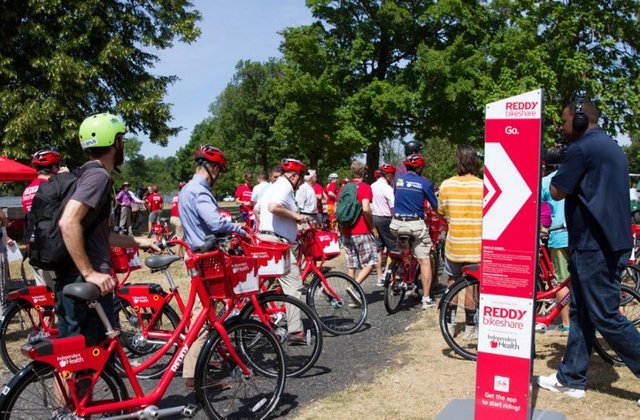
Bike-sharing is an intermediary option to address this problem. By flooding an area with a plethora of bikes, bike-sharing overcomes the barrier to bike acquisition and use for individuals who are otherwise apathetic towards biking given the current bike infrastructure or rather, lack of it. Depicted are bikers using the Reddy bike-share service in Buffalo, New York. Emily S. Dozier, Senior Planner at the Dutchess County Transportation Council, noted in a 2008 whitepaper how bike-sharing could “expand the health and wellness benefits of bicycle transportation beyond traditional enthusiast groups to everyone living or working in the center city”. Additionally, bike-sharing in its present form can begin to shape the construction of bike-infrastructure. Emily shares with me how the “new technology bike-share projects use can provide city planners with information to help figure out how to build infrastructure more efficiently”, as they can observe bicycle traffic and parking flows as well as trip details.
Sentiment on Bike-Sharing in Poughkeepsie
At the onset of the project, I assumed it would be more equitable for bike-sharing to be implemented across the city instead of just at Vassar. While Paul, the Community Development Coordinator at the City, talks about the job opportunities that could be opened up with new bike routes, he also shares how “many of the low income in Poughkeepsie have employment outside city boundaries, such as near a mall, which are not within a bikeable distance, and would prefer or require cars” and that biking would be used “only for short trips to stores”. As such, bike-sharing wouldn’t be meeting a need for bike-ownership or bike-use for most of the city’s residents. Instead, there might be sufficient reason and effort to push for infrastructural changes first in Poughkeepsie.
In a presentation by Peter Barnard of Scenic Hudson on current plans for the city, one of the main projects detailed was the Poughkeepsie City Centre Connectivity Project as part of an effort to move the city away from an automobile focus and create bicycle and pedestrian networks alongside the redevelopment of the waterfront. Both Peter and Poughkeepsie Mayor Rob Rolison lament the construction of the the 6-lane Route 9 North-South and the 3-lane Route 44/55 East-West arterials in the 70s, which cut through the city and a major commercial corridor and cut off part of the city from the waterfront respectively. Rolison says that back then the focus for development was on getting from point A to point B the fastest way, and that the waterfront wasn’t valuable back then. Peter describes how this development has led to a “dangerously high volume and speed of traffic that created safety issues felt by residents in the city”, as well as social and economic decline due to community and commercial disruption. The Poughkeepsie City Centre project aims to reclaim Market Street “for all users, including pedestrians, bicyclists, motorists and transit riders of all ages and abilities”.
While it might be unsuitable or still too early for bike-sharing to make its debut in Poughkeepsie, it is heartening to know that the city is creating more biking infrastructure and increasing bike-usage in other ways.While a city-wide bike-share program does not seem presently feasible or largely beneficial, both Paul and Emily see more promise in setting up contained bike-sharing programs in areas like Vassar and other colleges, on motor-free locations such as the Walkway Over the Hudson or the Dutchess Rail Trail, or during temporary events that draw large amounts of visitors like the Jazz in the Valley festival. They think that a higher density of users and established bike infrastructure would allow bike-sharing to succeed in these contexts and allow for them to serve as trial and gateway sites for more widespread adoption in the future. While freshman Zhang Ling Xiu is skeptical of bike-sharing’s success on the Vassar campus due to costs students would not want to pay, he thinks implementing it on places like the Rail Trail would be “a good starting point”. Emily is hopeful that bike-sharing even in this bounded capacity can “change culture and awareness in the long term if people do start using the bikes”. Emily also notes that there could be safety concerns due to bike-share users being untrained and not using helmets, which would “make areas such as the Walkway an easier environment”. However, she also shares how “bike-share projects like Albany’s, which didn’t have a lot of bike lanes, helmets, or education seems to be working out so far — way more usage than expected” and that upon rolling out the Citi Bike program, “NYC reported a surprisingly few number of incidents”.
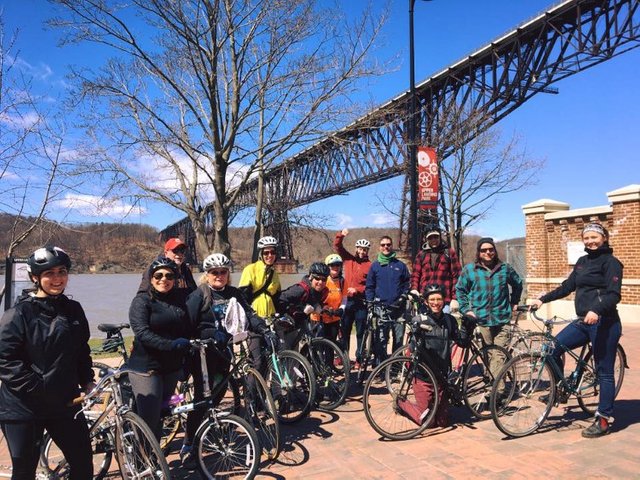
Regardless of what form bike-sharing might appear in eventually, political-economic partnerships seem to be vital. Emily notes that “public-private partnerships with hospitals and the healthcare sector, like HealthQuest, that promote physical activity in the Hudson Valley”, seem promising as there is a common health issue that can be organized around. She also suggests working with existing bike programs such as SPOKE (depicted above), which organizes bike rides and provides rescued bikes. In the long term however, both Emily and Paul view cooperation between multiple entities, such as the city, local colleges, and the private sector, to be necessary to implement something larger in scale, as they have observed with their recent difficulty in trying to add a bike lane to Hooker Avenue due to existing on street parking regulations and street sweeping practices.
Suggestions for bike-sharing at Vassar
Given its history with the failure of the pink bike-sharing program in the past, it is crucial for Vassar to first work out an appropriate strategy for ensuring equitable and respectful use. The factors that likely led to the downfall of the pink bikes program should also be carefully considered before implementing a a new system. The Shared Bikes program gave students “a key that will unlock any pink bike” with a one time $10 dollar payment. Post-payment, it was almost impossible to keep track of who used which bikes when and whether they left them intact and functional or even at least properly parked them. With new technological innovations in identification and tracking, responsibility over the bikes can still be entrusted to students while holding them accountable for cases of misuse. A mobile app could be used for keeping track of usage as well as an unlocking mechanism. Alternatively, Jia Min suggests that students could “use their VCard to check them out”, allowing for perhaps a shared payment system with Vcash, used for laundry, food, and other services.
Another area that has to be worked out is funding for starting the program and subsequent upkeep. The donation and class gift only yielded an insufficient number of 30 bikes and was not sustainable for the loss and damages that followed. Alistair Hall, Office of Sustainability head, has looked into employing Zagster, a bike-sharing platform, to start bike-sharing at Vassar in the past. However, the high costs associated with acquiring their service quickly closed that option. Two other models could be considered. The first is through enlisting companies like Mobike and Ofo, who are not paid but pay for the opportunity to set up their services to capture market share. While Adele , a sophomore, “see[s] the benefit of external organizations running [the bike-share program]”, she feels that it is “wrong for an external company to come in and profit off bike-sharing” and “personally would want to see profit going back to Vassar”. A second option would then be to enlist a company or organization that could sponsor the program in return for branding and tie ups with their own business, similar to what New York City has done with Citi Bike. This would allow for any surplus of value to go back to Vassar while sponsors benefit from good publicity.
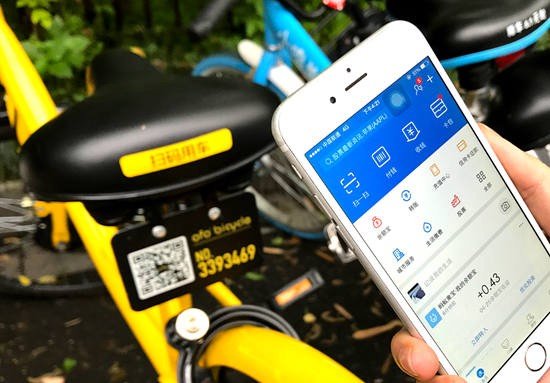
Payment across bike-sharing companies have been largely centralized in China
On the user end, Ling Xiu reckons that students will not be willing to fork out much if any money to use the bikes, as those who are able and willing to would already have their own bikes. We discussed how it would be important to make it seem like students are not spending any money to use the bikes, either by adding the fee to general student costs individuals pay along with their tuition, or by giving students a top up of credits every semester like the Arlington Bucks students are given to purchase food outside of the catering service. Adele too, thinks that “students wouldn’t be willing to pay for the program”, but could see a “deposit based on financial aid” system working, in which students put up collateral that is scaled based on financial need which they will get back as long as they do not misuse the bikes. My various student interviewees also brought up how students at Vassar might be against certain large corporate actors running or branding the program, and that they would be more supportive of a ‘green’ or sustainable organization.
As for what type of parking system to adopt, students generally feel that a docked system might be more beneficial for the Vassar context. Adele mentions how a dockless system would be subject to a “high risk of theft”, and Jia Min feels that despite lacking in flexibility, “even if it’s a parking lot system it would still be useful” as it “would be easier to regulate”. Ling Xiu is also in favor of a docked system as he believes that it is more suitable “for the US with less people and more regulations”.
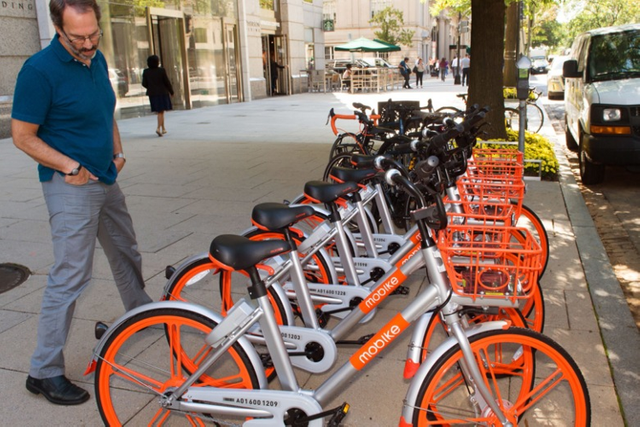
The advent (and success) of dockless bike-share in the US?
Alternatively, should another hub start its own bike-sharing service, such as Marist College or the Walkway, it might be beneficial then to use these factors to evaluate the merits and pitfalls of the way they choose to implement it and adjust the strategy for Vassar accordingly.
General suggestions for biking
Aside from bike-sharing, this project also yielded other useful takeaways for biking in Vassar. Speaking to Charles and Alexia, who run the Vassar Bike-Shop, provided some insight into what changes student cyclists want to see on campus. Regarding security and thefts on campus, they felt that it would be more effective to move resources from night patrols to subsidizing U-locks for student cyclists. Adele shares how her use of a chain lock in lieu of a U-lock is a primary concern for not using her own bike as frequently, as she was wary of parking it outside during less busy hours. Such a policy change would benefit students like her more than the current security patrols which are more reactionary than effective.
Adele also brings up how there is a lack of “defined guidelines for bike use and storage on campus”, resulting in her receiving infraction notices that leave her still unsure about what the rules are. She suggests that a clear set of guidelines for biking both on and off campus would be helpful for students who are biking for the first time in Vassar or Poughkeepsie. For instance, she observes how “ biking on sidewalk is okay in Vassar, but not in Poughkeepsie”. These guidelines seem necessary as well before bike-sharing can be implemented, for safety purposes.
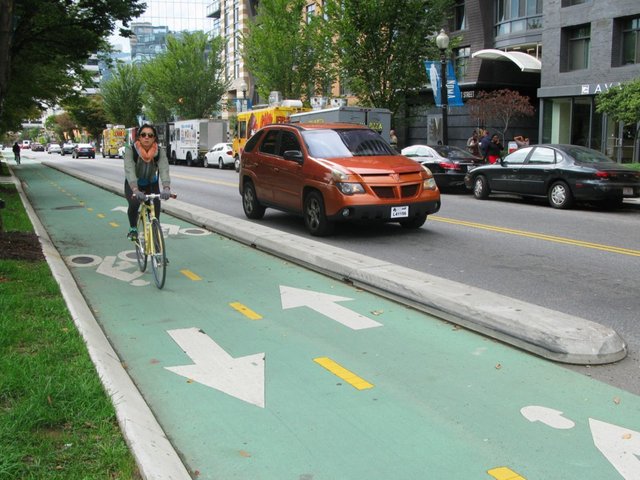
Without clearly demarcated bike lanes, where should bikers bike?
Additionally, the Bike Shop managers are looking to conduct an inventory of bike racks and storage on campus. Other students and faculty have also discussed the possibility of using GIS to add these locations to a searchable map of bike parking locations in Dutchess County. These suggestions would be helpful for seeing where additional bike infrastructure should optimally be added, and also for increasing bike use.
Concluding thoughts
The rapid adoption of bike-sharing programs bodes well for the health, environmental, social, and economic dimensions of cities globally. While bike-sharing can accelerate the process of bike infrastructure and provide niche benefits such as last-mile connection, it is also important to keep our eyes trained onto the long term goal of bike adoption and bike-use. For cities like Poughkeepsie, a large bike-sharing program may not be the most efficient means to attain that goal. As for implementing a smaller bike-share program in places like Vassar, the various factors of usage guidelines, accountability, partnerships, funding, and parking types should be carefully considered to ensure successful adoption and long term sustainability. I hope that if I ever get the chance to visit Poughkeepsie again years down the road I will be greeted with students and residents on bikes, a more vibrant, safe, and clean community, and sweet, sweet, protected bike lanes as far as the eye can see.
This article has also been published on Medium and LinkedIn.
Hi! I am a robot. I just upvoted you! I found similar content that readers might be interested in:
https://medium.com/@jerald/bike-sharing-in-vassar-poughkeepsie-41eaa0e622b
Congratulations @jerald! You have received a personal award!
Click on the badge to view your Board of Honor.
Do not miss the last post from @steemitboard:
SteemitBoard World Cup Contest - Semi Finals - Day 1
Participate in the SteemitBoard World Cup Contest!
Collect World Cup badges and win free SBD
Support the Gold Sponsors of the contest: @good-karma and @lukestokes
Congratulations @jerald! You received a personal award!
You can view your badges on your Steem Board and compare to others on the Steem Ranking
Vote for @Steemitboard as a witness to get one more award and increased upvotes!